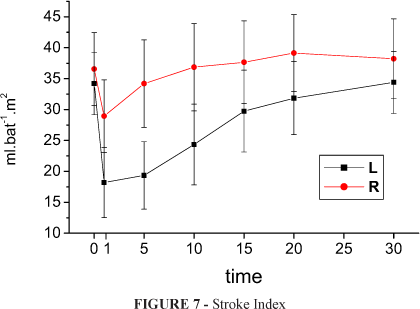PURPOSE: To compare the hemodynamic effects following a toxic dose of either agent after intravenous injection in swines, as might accidentally occur during regional anesthesia in humans. METHODS: Large White pigs were anesthetized with thiopental, tracheal intubation was performed and mechanical ventilation was instituted. Hemodynamic variables were recorded with invasive pressure monitoring and pulmonary artery catheterization. After a 30-minute resting period, the animals were randomly divided into two groups in a double-blinded fashion and received a bolus intravenous injection of 4 mg.kg-1 of either agent. Hemodynamic results were evaluated at rest and 1, 5, 10, 15, 20 and 30 minutes after intoxication. RESULTS: Hemodynamic repressions of acute intoxication with levobupivacaine were more important and more prolonged than those of ropivacaína. CONCLUSION: In pigs, levobupivacaine was shown to be more toxic than ropivacaine when the same large doses are injected intravenously.
Poisoning; Hemodynamics; Anesthetics, Local; Swine























